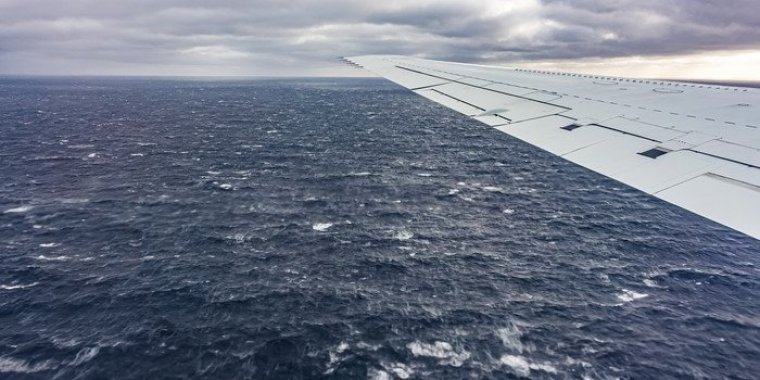| News / Science News |
Ocean life helps produce clouds, but existing clouds keep new ones at bay
Marine plankton breathe more than 20 million tons of sulfur into the air every year, mostly in the form of dimethyl sulfide, or DMS. In the air, this chemical can transform into sulfuric acid, which helps produce clouds by providing a site for water droplets to form. Over the scale of the world's oceans, this process affects the entire climate.

The view from a DC-8 research aircraft near where the ocean affects processes like cloud formation. Photo: Sam Hall
But research from the University of Wisconsin--Madison and other institutions reveals that more than one-third of the DMS emitted from the sea can’t help new clouds form because it is lost to the clouds themselves.
The new findings significantly alter the understanding of how marine life influences clouds, and may change the way scientists predict how cloud formation responds to changes in the oceans.
By reflecting sunlight back into space and controlling rainfall, clouds play a significant role in global climate. Accurately predicting them is essential to understanding the effects of climate change.
"It turns out that the story of cloud formation was really incomplete," says Tim Bertram of UW-Madison, senior author of the new report.
"Over the last three or four years, we've been questioning parts of that story, both through laboratory experiments and with large-scale field experiments. Now we can better connect the dots between what's emitted from the ocean and how these particulates that encourage cloud formation form."
"This research group is tracking down the connection of biofluxes to the formation of marine clouds, taking us one more step toward understanding Earth's changing climate," says Chungu Lu, a program director in NSF's Division of Atmospheric and Geospace Sciences. (National Science Foundation)





